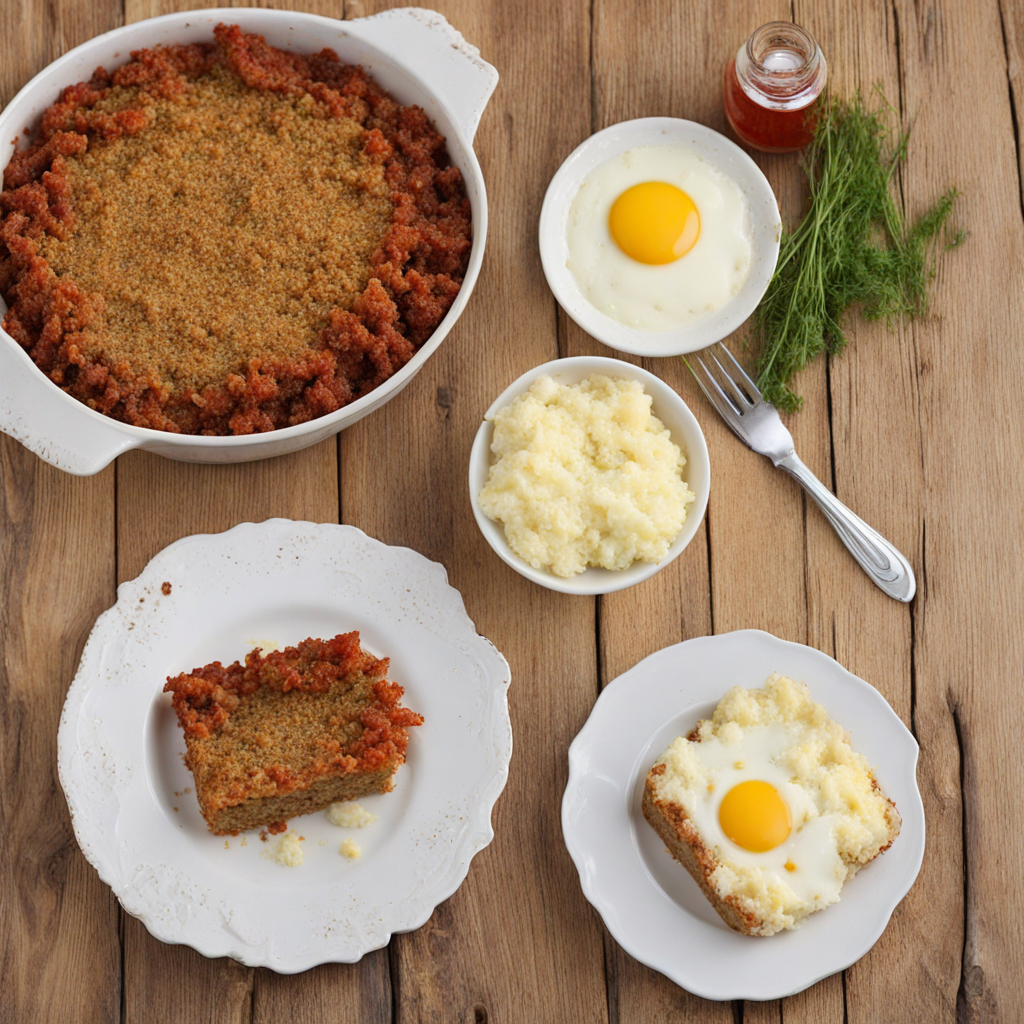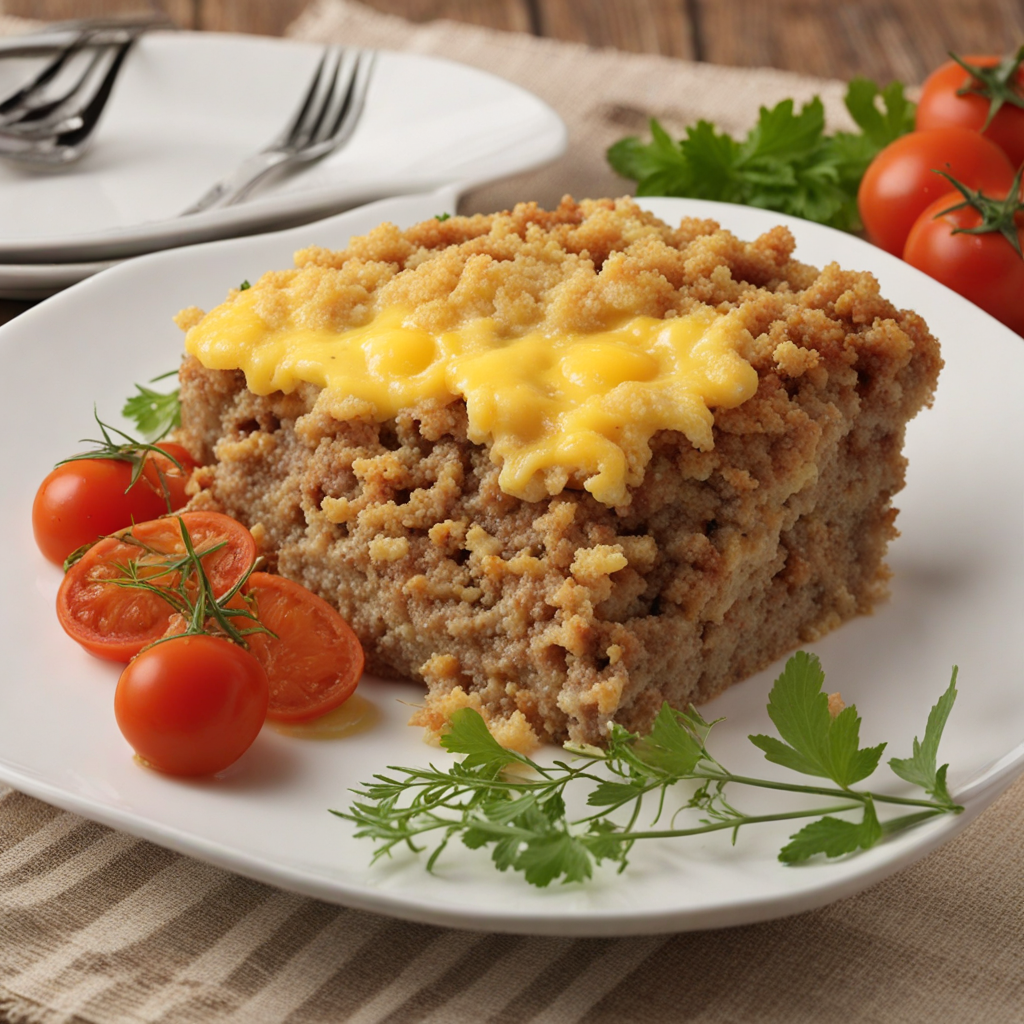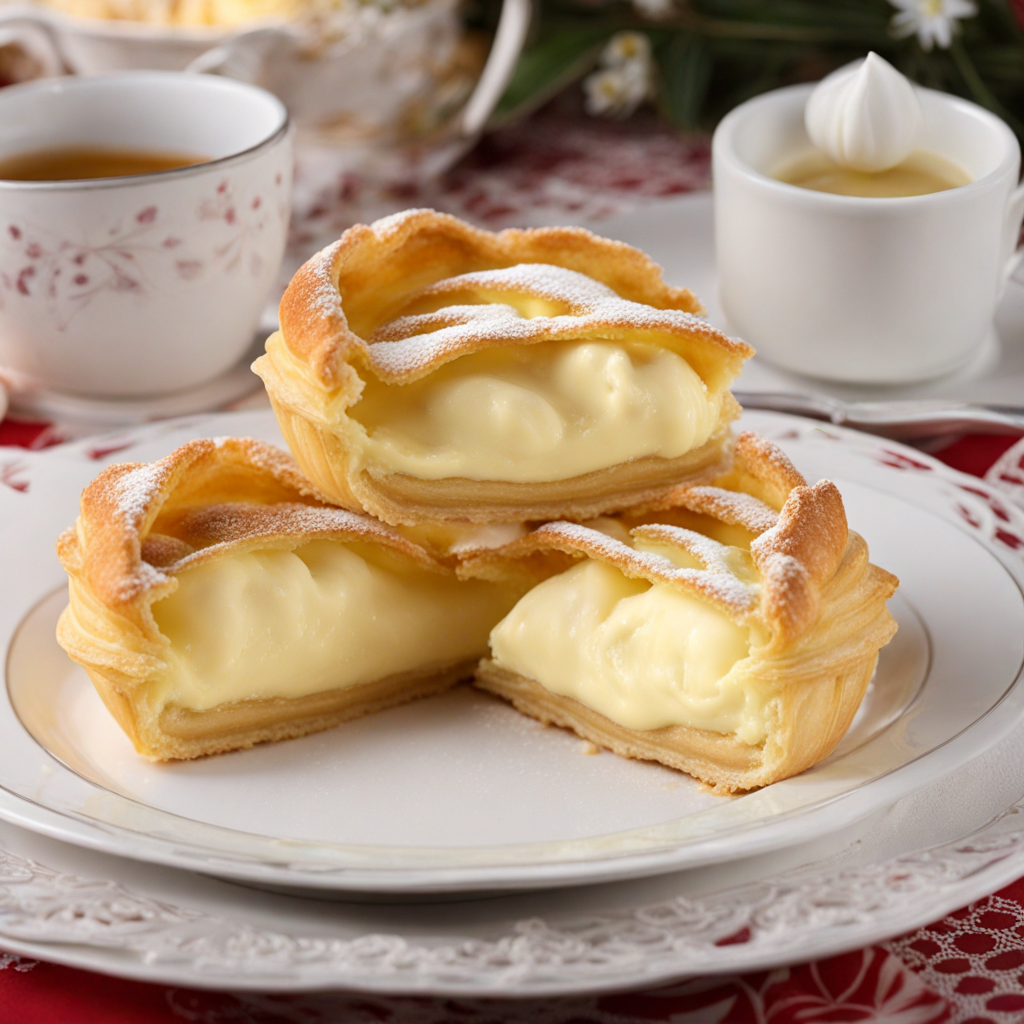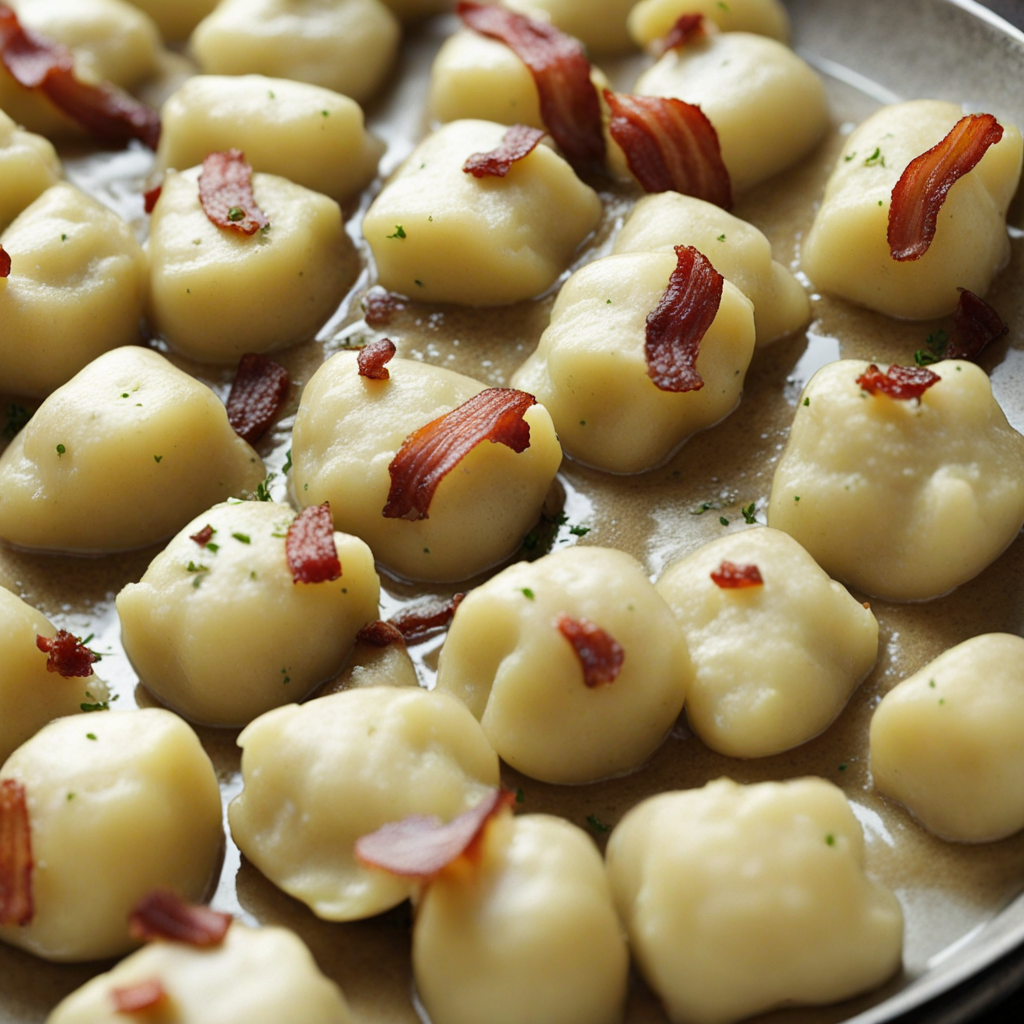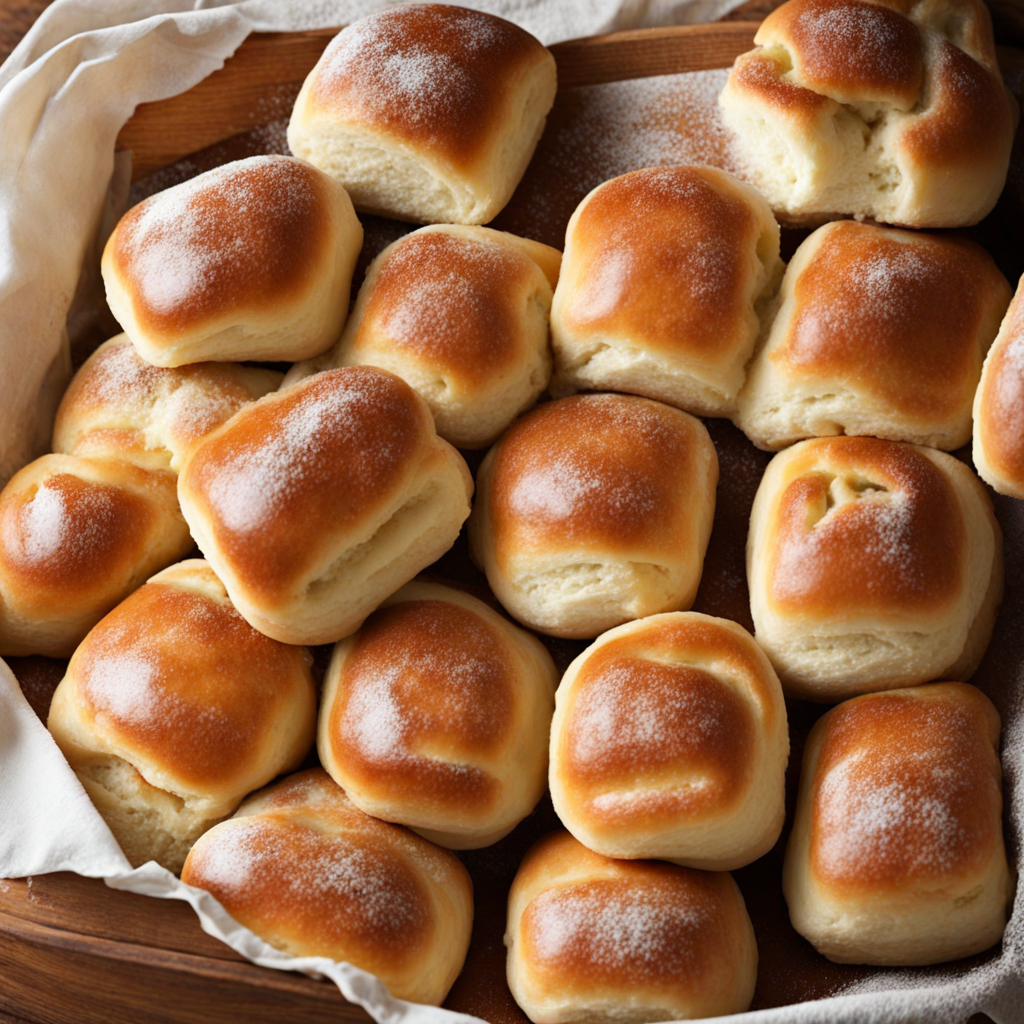Sekaná Pečienka
Sekaná Pečienka, a traditional Slovak dish, is a savory meatloaf that beautifully embodies the rustic flavors of Slovak cuisine. Made primarily from ground pork, beef, or a combination of both, this dish is seasoned with a variety of herbs, spices, and often includes finely chopped onions and garlic. The meat mixture is typically bound with breadcrumbs and egg, which not only adds texture but also helps to retain moisture during cooking. This hearty dish is often enhanced with the addition of diced vegetables, such as bell peppers or carrots, making each bite a delightful medley of flavors and textures. Once shaped into a loaf, Sekaná Pečienka is usually baked until golden brown, resulting in a crispy exterior that contrasts beautifully with the succulent, juicy interior. The cooking process allows the flavors to meld together, creating a savory richness that is both comforting and satisfying. It is often served with sides that complement its hearty nature, such as buttery mashed potatoes, tangy sauerkraut, or a fresh salad, allowing for a well-rounded meal that is perfect for family gatherings or special occasions. What sets Sekaná Pečienka apart from other meatloaf variations is the unique blend of spices and the Slovak approach to home cooking, which emphasizes freshness and local ingredients. After baking, it can be sliced and served hot or enjoyed cold as part of a hearty sandwich. This dish not only showcases the culinary heritage of Slovakia but also invites you to explore the comforting and rich flavors that characterize Slovak home cooking, making it a must-try for anyone looking to expand their palate.
How It Became This Dish
The History of Sekaná Pečienka: A Culinary Tradition of Slovakia #### Origins Sekaná pečienka, a beloved dish in Slovak cuisine, is an embodiment of the country's rich culinary heritage. The name translates to "minced meat loaf," and it reflects the resourceful spirit of Slovak households that historically relied on simple, yet hearty ingredients. The origins of this dish can be traced back to the rural traditions of the Slovak people, where meat was often preserved and utilized in various forms to make the most of available resources. In Slovakia, the consumption of meat has deep roots, cultivated through centuries of agricultural practices and livestock farming. The 19th and early 20th centuries saw a significant rise in the popularity of meatloaf-like dishes across Europe, influenced by the culinary exchanges that occurred after the industrial revolution. However, Sekaná pečienka emerged distinctly in Slovak kitchens, often prepared during family gatherings, celebrations, and as a staple meal during the colder months. #### Cultural Significance Sekaná pečienka is more than just a meal; it is a cultural emblem that carries the essence of Slovak familial bonds. Traditionally, this dish is associated with gatherings, especially during significant events such as weddings, holidays, and Sunday family dinners. The preparation of Sekaná pečienka often involved multiple generations coming together, fostering a sense of community and continuity. Recipes were passed down through families, with each household adding its unique touch, whether through seasoning, the addition of vegetables, or the choice of meat. The dish is often accompanied by side dishes that reflect the agricultural bounty of Slovakia, such as boiled potatoes, sauerkraut, or a medley of seasonal vegetables. The combination of flavors and textures creates a comforting meal that resonates with the Slovak ethos of hospitality and warmth. Sekaná pečienka has also found its place in festive menus, signifying abundance and celebration, making it a symbol of national pride. #### Ingredients and Preparation Traditionally, Sekaná pečienka is made from a mixture of minced pork and beef, although variations can include poultry or game meats, depending on regional preferences and availability. The meat is combined with breadcrumbs, eggs, onions, garlic, and an array of spices, typically including salt, pepper, and paprika. Some families incorporate additional ingredients like grated cheese, herbs, or even vegetables like carrots or bell peppers for added flavor and nutrition. The preparation involves mixing the ingredients thoroughly, shaping the mixture into a loaf, and then baking it in the oven until golden brown. A common practice is to coat the top with a layer of bacon or lard, which not only enhances the flavor but also creates a succulent outer layer. This method of cooking reflects the Slovak tradition of maximizing flavor while utilizing local ingredients. #### Evolution Over Time As Slovakia navigated through the tumultuous 20th century, from the Austro-Hungarian Empire to the formation of Czechoslovakia, and eventually to independence in 1993, the culinary landscape evolved. The globalization of culinary practices and the influence of contemporary cooking techniques began to permeate traditional Slovak cuisine, including Sekaná pečienka. In contemporary Slovakia, this dish has adapted to modern tastes and dietary preferences. Health-conscious variations have emerged, with some cooks opting for leaner meats or vegetarian substitutes made from lentils or beans. The rise of artisanal and locally-sourced ingredients has also influenced the preparation of Sekaná pečienka, with an emphasis on organic produce and sustainably-raised meats. Moreover, the dish has gained recognition beyond the borders of Slovakia, celebrated in international Slovak culinary festivals and by expatriate communities around the world. This cultural exchange has introduced Sekaná pečienka to new audiences, allowing it to evolve while still honoring its roots. The dish is now often featured in Slovak restaurants and is a staple at Slovak food fairs, showcasing the flavors of Slovakia to a global audience. #### Sekaná Pečienka in Modern Slovak Cuisine In modern Slovak cuisine, Sekaná pečienka is celebrated not only for its taste but also for its versatility. Chefs experiment with different fillings and toppings, often incorporating local specialties such as smoked meats, cheeses, or unique spice blends. Some innovative cooks even offer fusion versions, blending traditional Slovak flavors with international cuisines, thereby broadening the appeal of this classic dish. Sekaná pečienka’s popularity has also led to its inclusion in Slovak cookbooks and culinary seminars, where chefs and home cooks alike share their beloved family recipes. This sharing of knowledge ensures that the tradition of preparing Sekaná pečienka is preserved while allowing for creative interpretations that keep the dish relevant in today’s culinary scene. #### Conclusion Sekaná pečienka stands as a testament to the resilience and adaptability of Slovak culinary traditions. Rooted in the agricultural practices of the past, it reflects the communal spirit and hospitality of the Slovak people. Over the years, it has evolved from a simple, rustic dish into a cherished symbol of Slovak culture, embraced by generations and adapted for modern palates. As this dish continues to be prepared and celebrated both in Slovakia and around the world, it serves as a delicious reminder of the importance of food in connecting people to their heritage, their families, and their communities. Whether enjoyed at a family gathering or a festive occasion, Sekaná pečienka remains a comforting and flavorful representation of Slovak identity, embodying the heart and soul of its culinary landscape.
You may like
Discover local flavors from Slovakia


